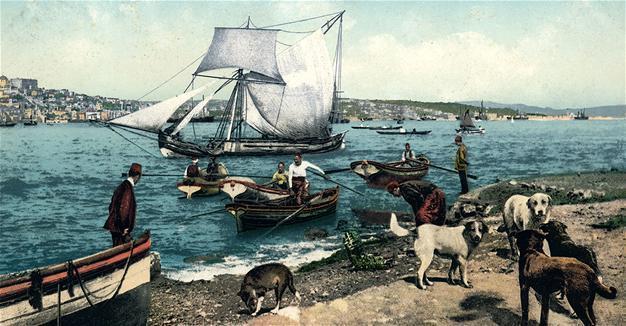Exhibition sheds light on street dogs of Istanbul
ISTANBUL
 The new exhibition at the Istanbul Research Institute, “The Four-Legged Municipality: Street Dogs of Istanbul,” sheds light on the ancient city’s street dogs, which have been an integral part of daily life in Istanbul over centuries of political, religious, and sociological upheaval.
The new exhibition at the Istanbul Research Institute, “The Four-Legged Municipality: Street Dogs of Istanbul,” sheds light on the ancient city’s street dogs, which have been an integral part of daily life in Istanbul over centuries of political, religious, and sociological upheaval.The exhibition, curated by Ekrem Işın with advisor Catherine Pinguet, follows the history of Istanbul’s dogs, which have been a constant in the city’s social life over many generations. This show retraces this history through photographs, travel journals, postcards, magazines and engravings from the 19th to the early 20th centuries.
Street animals continue to be a key characteristic of Istanbul, and project advisor Pinguet said they should be taken seriously as a cultural phenomenon.
“Some people ask: Why should there be so much care and consideration for an animal? That is a never-ending reproach directed at those who take the animal issue seriously. It is a commonplace question that friends and protectors of street dogs in Istanbul know only too well,” she said.
In response, Pinguet quotes from French writer Romain Gary’s novel Les Racines du ciel (The Roots of Heaven): “Because their freedom is the guarantee of mine.”
One of the reasons why street animals have managed to survive into the modern age is that Istanbul’s streets were sparsely occupied by the public until the mid-19th century.
“The fate of street dogs, these guardians of public property, began to change with the development of a more civil society. As Istanbul’s geographical boundaries expanded, the newly established quarters became the units of settlement that wove the positivist fabric of everyday life. While the four-legged municipality of the Ottomans was being transformed into the two-legged municipality of the Republic, the positivist concept of life was also expunging dogs from İstanbul’s history starting with these districts,” reads the exhibition’s publicity.
“When the notion of exterminating the dogs with poison gas was advanced in 1927 by some experts who had been to Europe, not a single person, with the exception of Ahmed Rasim, who was a throwback to the period of the four-legged municipality, stepped forward to defend these abandoned animals,” it adds.
Curator Işın is quoted as underlining the role that street dogs have played as guards or watchmen in ensuring neighborhood security.
“Western observers, assuming that dogs had the job of cleaning the streets in Istanbul, where modern municipal government was as yet non-existent, was in a sense stretching the rational molds cut out for the East,” she said.
The exhibition “The Four-Legged Municipality: Street Dogs of İstanbul” will be on show through March 11, 2017.
















